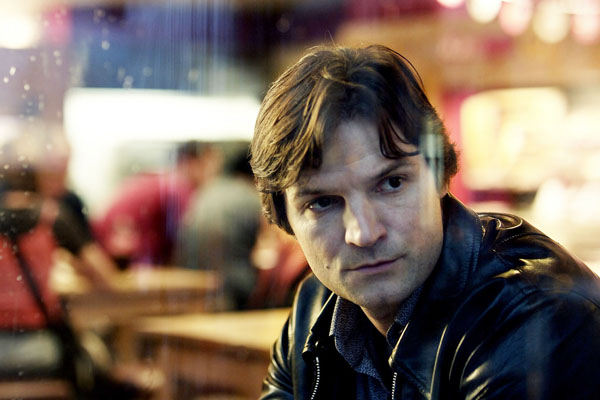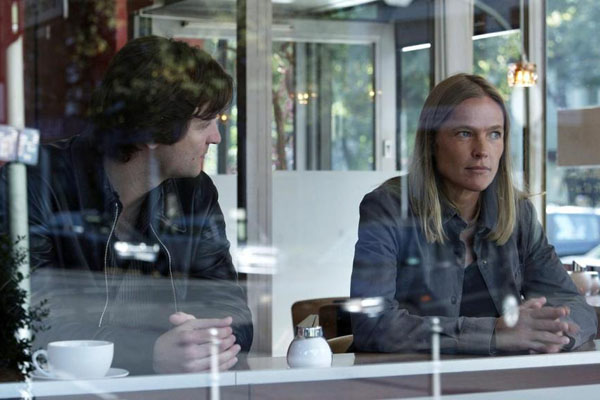After Dark
When speaking about German cinema of the last 20 years, it’s difficult to avoid addressing the so-called Neue Berliner Schule (Berlin School) of filmmaking. Granted, there are still segments of the film world (particularly certain key international festivals) that continue to behave as if this body of films never existed. Such a commitment to (literal) business as usual is hardly worth dignifying with extended commentary, since the international success of one of the key figures of the "movement," Christian Petzold, has established the Berlin School’s bona fides beyond all question. No one can legitimately speak of contemporary narrative cinema in Germany without at least engaging with the work associated with this group.
At the same time, there is the problem of referring to these directors and their work as the “Berlin School,” given that there is no actual movement as such, and many of the filmmakers who have been associated with this stylistic development neither hail from nor are based in Berlin. (Cahiers du Cinéma has referred to the films, more than their makers, when deploying the label “Nouvelle Vague Allemande.”) What most of the filmmakers do have in common is a connection to the dffb (Deutsche Film und Fernsehakademie Berlin), the nation’s most progressive film and television school. Three flagship “members” of the first generation of Berlin Schoolers—Petzold, Angela Schanelec, and Thomas Arslan—all attended the dffb. So there is an institutional basis for the “Neue Berliner Schule” banner, even though there is no precise collective identity among the 30-plus filmmakers typically yoked together under it. Nevertheless, the label tends to be a critics’ shorthand more than anything else, one that easily connotes a set of formal and sociological approaches, while obscuring differences in individual artistic vision. As the broad think-pieces on the Berlin School drift toward ever greater generalities, Barnett Newman’s old joke about aesthetics being for artists “what ornithology is for birds” seems more and more apposite.

In the Shadows
One of the finest examples of such a strong, uncompromising vision is the work of Thomas Arslan. A Turkish-German director with six fictional features and several documentaries to his credit—his seventh feature, Gold, world premieres in competition at this year’s Berlinale—Arslan combines a concern with cross-cultural and multi-ethnic life in Europe with a meta-cinematic interest in genre and cognitive address. Dealer (1999), for example, used the rough framework of a gangster film to organize what was essentially a piece of social realism about a young man falling through society’s cracks. On the other hand, the austere family drama Vacation (2007) adopted an almost Bergmanesque approach to intricate human dynamics, while filtering it through a lyrical, long-take style more of a piece with Arslan’s French or Taiwanese contemporaries than with much of the German-language cinema of the time.
But in many ways, In the Shadows has been considered not only Arslan’s best film to date but an artistic breakthrough as well. No film screened at the 2010 Berlinale garnered more across-the-board plaudits. Whereas Arslan’s previous films seemed to engage with genre from a more theoretical perspective, much like his colleague Christian Petzold, In the Shadows marks a shift toward a firmer commitment to the crime genre. While the film is indeed deliberate (no one would mistake In the Shadows for, say, Soderbergh’s Ocean’s 11), it seems to take the question of crime and its cinematic depiction from the opposite side. What can the gangster’s situation reveal about more common existential crises, as well as the state of German Being? In this regard, critics who have understood In the Shadows to be Arslan’s riff on Jean-Pierre Melville (particularly Le Doulos) are not incorrect, but the film owes as much to the work of German film and TV axiom Dominik Graf, for whom genre is the starting point for all philosophical inquiry.
All of which is to say, if there is a balance within Berlin School cinema between the embrace of genre elements and an exacting, constructivist formalism, then In the Shadows finds Arslan tipping that balance ever so slightly toward those generic elements which, in turn, reflect a slight nudge toward a certain level of accessibility. This is impressive, because it instigates a highly engaging dialectic that, in its own way, motors In the Shadows even more than the plot itself. The film is a patient but propulsive portrait of a very opaque man, rendered in surfaces and textures that capture the icy gleam of late capitalism “after dark.” Arslan has created a work of art so polished and vacuum-sealed that it stands as a kind of mirror to its audience’s expectations.

In the Shadows
Trojan (the effortlessly charismatic Misel Maticevic) gets out of prison, tries to claim an old debt, and is suddenly a hunted man. A dirty cop, a girlfriend in the state bureaucracy, an old partner, one last job… None of these elements is new, but Arslan orchestrates them with absolute directness (rather than signposting them with inverted commas). This relative transparency, even against ace cinematographer Reinhold Vorschneider’s reflective surfaces, becomes a formal as well as a narrative principle. Arslan’s willingness, through editing and pacing, to keep all the players very clearly on the board at all times, tells us that (social) legibility is possible, even within the confines of a stacked deck.
Midnight blue interiors, slate gray street-level facades, and Trojan’s
rumpled, 1970s demeanor are Arslan’s patterned visual dominants,
providing both a self-effacing “realist” style and a subtle minor-key
musicality underpinning the grim determinism of the road that lay ahead
of Trojan. (Arslan showcases his fair share of non-spaces as well. The
pivotal heist takes place in an empty parking lot behind an IKEA, and an
ingenious money drop is situated within a gas station car wash.) Again,
despite the classic genre codes and basic cinematic pleasures, the film
also provides the possibility for a more distanced, self-conscious
reading, a strange byproduct of its extreme professional veneer. Many
Berlin Schoolers have emphasized social and spatial divisions over the
years by slicing their films' mise-en-scène with reflective windowpanes,
glass doors, frames within frames. (Ulrich Köhler’s second feature,
Montag kommen die Fenster [Windows on Monday], pretty much thematized
this tic explicitly.) In the Shadows is no exception. Its opening five
minutes in particular are so replete with refracted light, it’s almost
as though we’re watching a gangster flick made by an avant-gardist like
Nathaniel Dorsky. How does one even negotiate this abstracted,
evanescent cityscape? The too-keen sheen of ideality, this
glass-and-chrome perfection that Arslan has generated may be asking us
to reflect back the very plausibility of a Melvillian man like Trojan, a
would-be existential hero in a world with no center. ![]()
LATEST ARTICLES
-20140814-173707-thumb3.jpg)
Fighting Words
by Imogen Sara Smith
posted August 12, 2014

Fighting Words, Part 2
by Imogen Sara Smith
posted August 20, 2014

On the Margins: The Fil…
by Andrew Chan
posted August 12, 2014

Robin Williams: A Sense…
by David Schwartz
posted August 12, 2014
 After Dark
After Dark
THE AUTHOR
Michael Sicinski is a film writer and teacher based in Houston, Texas. He is a frequent contributor to Cinema Scope, Cineaste, and GreenCine Daily.
More articles by Michael Sicinski
